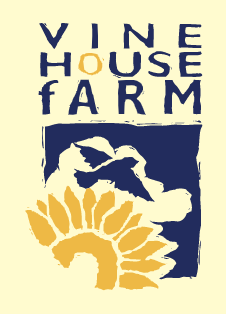
November has been a wet month here and it would appear to have been very wet all over the country. It is our 2nd wettest November in 50 years, 85.8mm or 3.4ins. No doubt some of you will think only 3.4 ins, well please let me know how much rain you have had. It has been a mild month here as well, the 2nd mildest November I have recorded. We are on track to make this the mildest year in the last 50 years and probably the mildest year ever. Only one air frost here this autumn so far.

November has not been a good month for farming – it has been far too wet. We finished potato picking on November 10th, later than usual as we like to get finished by the end of October. Harvesting crops in November, on the land we farm, generally is not a good idea as it is usually wetter in November than October and it is not good for the structure of the soil. Then we have the sugar beet still in the ground, the contractor came along to harvest it and he broke down. He didn’t get the field finished before we had heavy rain, so we have been left with a few acres in a field until the weather dries up a bit.
Fifty years ago, all the sugar beet would be lifted before Christmas and the factories would have it all processed by the end of January. It was done that way because the sugar beet could be frosted in the ground and also in the heap; when it is frosted, it goes rotten and cannot be processed. The threat of frost spoiling the sugar beet has disappeared. British Sugar would like to keep their factories working seven months of the year instead of five, so we are now having to lift sugar beet in January and February and that doesn’t suit our soils. We then get a lower yield from our next crop.
As sugar beet is a biennial plant, it keeps growing through the winter when the temperature allows it to. If it is left in the ground, it keeps growing and if it is lifted and put in a heap, it will start to grow using the sugar found in the root – losing sugar content. When our sugar beet goes to the factory, the sugar content is analysed and we get paid on the sugar content of the beets, plus the weight that we deliver.
The grain merchants we deal with are far more expert at selling grain than we are, it is their job to watch the market and sell when the price is high. We say to three merchants we will put 1000 tons with you to get us the best price possible. Other farmers do that as well, then we get the average price of all their sales which is usually higher than what we would have made. We don’t know what price we will be receiving yet, but they are busy hauling it away. The price of wheat has been dropping since Russia has been letting ships with wheat pass through the Black Sea, but the prices are still a lot higher than last year.
The potato price this year is a lot higher than last year due of course to the very dry summer that we had. It needed to be, as we have made a loss on the potatoes we have grown that were destined for the supermarkets for the past two years. The supermarkets have been selling less fresh potatoes – after all they are a very basic product and there are so many lovely fresh vegetables in our shops. It only needs you all to buy a few more vegetables, instead of potatoes, over the year and we then have a surplus and the price to us drops.


Wood Pigeons were continuing to visit our water feature in the Vine House Farm garden during the first week in November, for a drink, which means that they were still feeding young.
The Whooper Swan count built up to 900 on Saturday 5th November, but by Monday 7th they had nearly all disappeared. Two years ago, they stayed with us for the whole winter, that was a wet winter, too wet for farmers to cultivate. So the maize and then the sugar beet stubbles were exposed all through the winter, which is where they like to feed. This year has been much drier so farmers have ploughed or dragged their maize land. This means there is no food for them, so they have gone further south, probably to the Nene or the Ouse Washes.
The expected arrival of Lapwings, Golden Plovers and Fieldfares did not happen until 18th or 19th November. Our mild autumn meant that we’ve had lots of southerly winds. On 16th and 17th November we had a low pressure system over the eastern side of the country; the winds rotating around this low pressure system were ideal for the birds in Scandinavia to cross the North Sea. On 19th November we had two flocks of Lapwings and Golden Plovers amounting to 7,500 birds. There was also a notable increase in the number of Fieldfares. The Golden Plovers didn’t stop long, three days later I could only find 300, and now less than 50. Lapwings have stayed around and we probably have 2,000 in the area.
Barn Owls have had a good year here in Deeping Fen, nearly half of the sites I monitor have had a second brood and they have reared 67 young. The previous best year was 2014, when they reared 87 young. They were able to rear all those young because there have been plenty of voles around. Voles do not breed well in wet weather. From November 2021 until October 2022, nearly every month our rainfall has been below average, so voles and Barn Owls bred well. Kestrels have also been very obvious this autumn, it could be that the local population has survived well, or others have moved in to take advantage of the numbers of voles.
October and November have been wet and windy which is bad news for voles and Barn Owls. Barn Owls cannot hear voles moving around in the grass when it is raining or when it is windy. Barn Owls are now flying in daylight, which is bad news for them as they must be hungry. If they do catch a vole in daylight hours, Kestrels will be ready to rob them of their catch.
Two years ago I was getting quite excited about increasing our Moorhen population as they were breeding very well, but they have not done very well since then. In 2021, they bred well but a stoat killed some of them and there were only eight of them during the winter. This year, they had four broods again but only reared three chicks. I hadn’t seen any stoats around, so I didn’t think stoats were the culprits. All the eggs of each brood hatched though, which is a good start as they have nested in our floating Moorhen house. I wondered if they cleared our pond of newts, beetles and water boatmen and ran out of food. Now there are only four of them at the feeder and the male is very bossy, chasing two of them away. I thought I would soon get an increase in our population of Moorhens but it is not proving to be as easy as I thought it would be.



